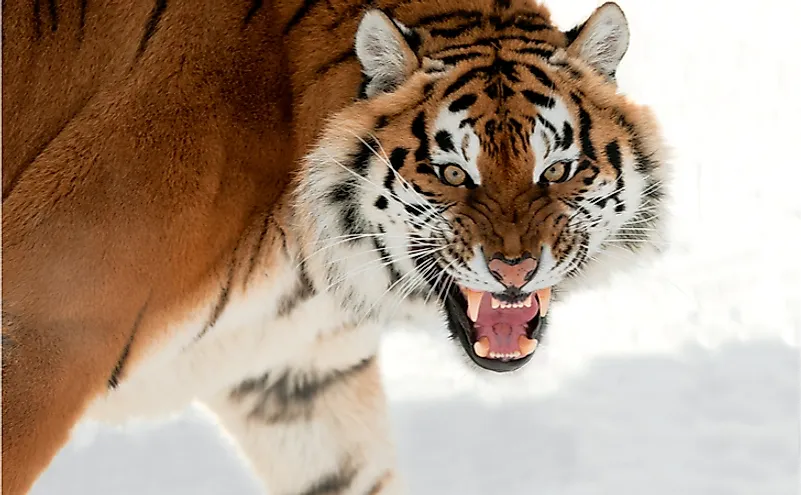What Constitutes The Diet Of Siberian Tigers?

Siberian tigers are also known as Amur tigers, and they are the largest of all the big cats. They are apex predators in their ecosystem consuming a wide variety of prey species. They are found in the Northeastern part of China, the Far East region of Russia, and some parts of North Korea. In the 1940s, Siberian tigers were hunted to the verge of extinction, and they had remained only 50 in the wild. After the Second World War, Russia became the first country to offer the Siberian tiger full protection. Although the populations of the Siberian tigers have increased over the years, they are estimated to be less than 500 in the wild today. Siberian tigers can grow to reach between 6 feet and 9 feet long. Some have attained a length of 11 feet long. They weigh between 300 and 600 pounds, and some could weigh as much as 700 pounds or even more. They have thick fur compared to other tiger species, and they also have a thick layer of fat to keep them warm. The Siberian tigers, like other tigers, have orange fur and black stripes, but they have less orange color and fewer stripes. They also have extra fur on their paws and around their necks.
Feeding Habits
The habitats of the Siberian tiger are frigid cold regions, and for their survival, an adult tiger requires a meal of at least 20 pounds each day. An adult Siberian tiger can eat as much as 100 pounds of meat. Like all other cats, Siberian tigers are carnivorous, and within their ecosystems, they are the apex predators with no known predators of their own other than humans who hunt them for their body parts. They prey on deer, moose, and wild boar. When the prey is in short supply, the Siberian tigers hunt for rabbits, rodents, fish, and even small bears. It has been established that about 50% of their diet during normal conditions is accounted for by the wild boar.
Hunting
Siberian tigers can attain speeds exceeding 50 miles per hour when they are hunting, but they cannot sustain such speeds for long because it takes more energy, and therefore the Siberian tiger can only run at top speeds for short distances. These tigers have excellent night vision, and they hunt at night when they can surprise their prey. They also have a good sense of hearing and smell. According to the Wildlife Conservation Society (WCS), a female Siberian tiger requires a home range of about 12.4 miles by 12.4 miles, while a male Siberian tiger would require up to 25 miles by 25 miles area range to patrol. The extensive home range is due to the low density of prey in temperate climates.
Threats And Conservation
Initially, there were nine subspecies of tigers, and three are now extinct, leaving only six subspecies of tigers worldwide. According to IUCN, the Siberian tiger is listed as endangered. In the 1990s, it was listed as critically endangered. The worst period for the Siberian tiger was in the early 20th century, particularly in the 1930s and 1940s, when the population dropped to only between 20 and 30 individual animals. The census of 2005 indicated that there were 360 Siberian tigers in the wild. The biggest threat of these cats is poaching and loss of habitat. Hunting of other animal species in the region has also reduced the source of food and puts tigers into conflict with humans.
Learn about some other animals that share range with the Siberian tiger here.











